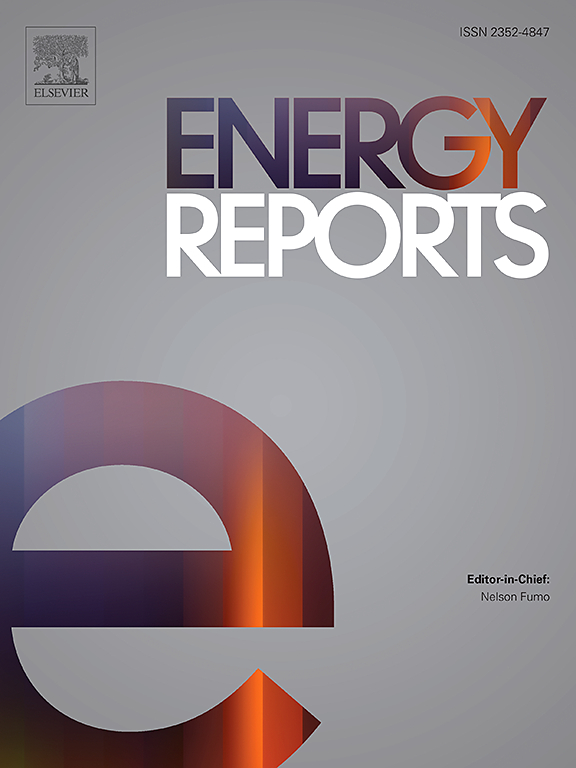海上风电高压直流输电混合模块多电平变流器关键技术综述
IF 5.1
3区 工程技术
Q2 ENERGY & FUELS
引用次数: 0
摘要
为了将风能整合到输电系统中,高压直流(HVDC)是最有效和最具成本效益的选择。模块化多电平变换器已成为最适合所需AC/DC转换的变换器。为了在高压直流输电中保持电力的可用性、稳定性和可靠性,变流器在直流故障时提供故障穿越(FRT)和作为静态补偿器(STATCOM)的能力已经成为重要的要求。传统的基于半桥的MMC是最经济、最高效、应用最广泛的拓扑结构,但它不能满足这些要求。虽然全桥MMC具有这种能力,但它使转换器成本、器件数量和损耗增加了一倍。在目前的MMC拓扑结构中,电容器占转换器体积的50% %和重量的80% %。为了在海上风能变电站中有效地利用它们,需要降低储能要求。在过去几年中,已经引入了许多Hybrid MMC (HMMC)拓扑来提供满足这些需求的解决方案,但是还没有发现能够满足所有要求标准的拓扑。需要对现有拓扑及其特征、优势和缺点进行全面审查,以确定研究差距并指导未来的工作。本文对文献中发现的用于高压直流海上风电传输的所有混合mmc (hmcs)的拓扑结构、故障处理和STATCOM模式进行了全面而系统的综述。它比较了这些拓扑的结构、损失和功能,以指导未来的研究。案例研究通过对额定电压为1500MVA,直流电压为1050KV的变换器的基于开关的MATLAB模型进行时域分析,计算了这些拓扑的损耗和能量需求。结果对这些拓扑结构的损耗和能量存储要求进行了定量比较,这将有助于为未来的工作提供指导。本文章由计算机程序翻译,如有差异,请以英文原文为准。
Critical review of hybrid modular multilevel converters for HVDC transmission in offshore wind energy
For the integration of wind energy into the transmission system, High Voltage DC (HVDC) is the most efficient and cost-effective option. Modular multilevel converters have emerged as the most suitable converters for the required AC/DC conversions. To maintain power availability, stability, and reliability in the HVDC transmission, the converters’ ability to offer fault ride-through (FRT) and work as static compensators (STATCOM) during DC faults have become important requirements. The conventional half bridge-based MMC is the most cost-effective, efficient, and widely used topology, but it cannot meet these requirements. Though full-bridge MMC has this ability, it doubles the converter cost, device count, and losses. In the present MMC topology, the capacitors occupy 50 % of the volume and 80 % weight of the converter. Reducing energy storage requirements is needed for their efficient use in offshore wind energy substations. Many Hybrid MMC (HMMC) topologies have been introduced in the last few years to offer a solution to meet these requirements, but no topology has been found yet that can fulfill all the required criteria. A comprehensive review of the existing topologies, their features, strengths, and drawbacks are needed to identify research gaps and guide future works. This paper provides a thorough and systematic review of the topology, fault handling, and STATCOM mode of all hybrid MMCs (HMMCs) for HVDC offshore wind energy transmission found in the literature. It compares these topologies' structure, losses, and functionality to guide future research. A case study calculates these topologies' losses and energy requirements by using time-domain analysis of a switching-based model in MATLAB of these converters, with a rating of 1500MVA with 1050KV DC voltage. The results present a quantitative comparison of losses and energy storage requirements across these topologies which would be useful to give directions to future works.
求助全文
通过发布文献求助,成功后即可免费获取论文全文。
去求助
来源期刊

Energy Reports
Energy-General Energy
CiteScore
8.20
自引率
13.50%
发文量
2608
审稿时长
38 days
期刊介绍:
Energy Reports is a new online multidisciplinary open access journal which focuses on publishing new research in the area of Energy with a rapid review and publication time. Energy Reports will be open to direct submissions and also to submissions from other Elsevier Energy journals, whose Editors have determined that Energy Reports would be a better fit.
 求助内容:
求助内容: 应助结果提醒方式:
应助结果提醒方式:


